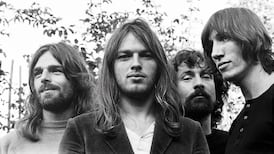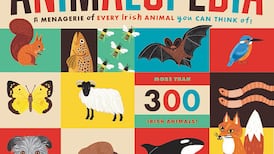It is the individual experience of the horror of war that makes Anthem for Doomed Youth, an exhibition of the work of first World War poets and artists at London's Imperial war Museum, so memorable, writes Suzanne Lynch.
The poets of the first World War continue to occupy a special place in English cultural memory. As representatives of the lost generation of the Great War the popularity of their verse is unrelenting.
An exhibition at London's Imperial War Museum brings together 12 of these war poets. Titled Anthem for Doomed Youth, the exhibition is a moving and informative reappraisal of the poetry of the first World War. The exhibition also captures the reality of their death: the telegram received by Wilfred Owen's mother as the Armistice bells rang on November 11th 1918; the pocket watch belonging to Edward Thomas, which stopped at the moment of his death. By placing these poems in their historical context, the exhibition brings to life the experience of the war from the point of view of 12 men who served in it.
A sense of old-world idealism infuses the pictures and portraits of the young Edwardian Englishmen in their pre-war days. They were the "doomed youth" catapulted into what became the first truly modern war. Suitably, the exhibition begins with Rupert Brooke, the handsome, upper-class, Bloomsbury aesthete, whose poetic invocation of "some corner of a foreign field that is for ever England" captured the youthful idealism of the predominantly upper classes who first enlisted to fight the war.
But this misty idealism was soon to dissipate when confronted with the reality of life in the trenches. One of the most celebrated poets in this regard is Wilfred Owen who tangibly evokes the physicality of warfare, and the mutilation of the body that resulted from battle.The ironic thrust of one of his most famous poems 'Dulce et Decorum Est' works on a contrast between the heroic idealism encapsulated in the title and a shuddering image of death: "the blood/ come gargling from the froth-corrupted lungs / Obscene as cancer, bitter as the cud / of vile, incurable sores on innocent tongues."
Unlike Owen, Siegfried Sassoon, another well-known anti-war figure, survived the war. In the book that accompanies this exhibition, Jon Stallworthy suggests that Sassoon's survival of the battle of the Somme in 1916 marked a turning point in his poetry. Certainly, from this time on, he produced his famous invective and satirical tone. His criticism of the establishment bodies that "speed glum heroes up the line to death" continues to strike right at the heart of war idealism.
A strength of the exhibition is its inclusion of lesser-known poets, who vary in social background. The most notable is the Irish poet Francis Ledwidge, from Slane, Co Meath, who was killed by a stray shell in April 1917.
He famously defended his decision to join the British army, claiming that "she stood between Ireland and an enemy common to our civilization and I would not have her say that she defended us while we did nothing at home but pass resolutions".
He was on sick leave in Manchester when he heard about the events of Easter 1916. His most famous poem, 'Lament for Thomas McDonagh,' was written as a response to the execution of the Irish leaders. The addition of Ledwidge adds an interesting perspective to an exhibition that is ostensibly about an intensely "English" experience - no mention of French or German poets is made at any point.
Also on display is a manuscript page of 'In Parenthesis' written by David Jones. Although unpublished until 1937, this sprawling, war epic is one of the best examples of how modernist art, championed by T. S. Eliot and James Joyce, could give expression to the chaos and anarchy that was the individual experience of the first World War.
Some of the poets used additional artistic media to respond to war. Ivor Gurney was a composer as well as poet, most famous for his song Down By the Salley Gardens. Excerpts from his war compositions are piped through the exhibition space. Isaac Rosenberg was also a talented artist. The juxtaposition of his visual and literary works allows us to compare and contrast his different aesthetic responses to war. Similarly, the only surviving manuscript page of Robert Graves' war memoir, Goodbye to All That, is displayed alongside his poetry.
The exhibition brings to light the relationships war fostered between the poets. Robert Graves wrote: "Show me the two so closely bound / As we, by the wet bond of blood / By friendship blossoming from mud / By Death."
When Sassoon published a cutting attack on the army in 1917, Graves attested Sassoon was suffering from shell-shock so his friend would avoid punishment. Sassoon was sent to Craiglockhart War Hospital against his will, but ironically it was here that he met Wilfred Owen, who was also being treated for shell-shock. The elder poet's influence is evident in the final manuscript version of Owen's 'Anthem for Doomed Youth', which has corrections marked in Sassoon's hand.
So what does this exhibition offer that is new? Its main achievement is to reclaim the poems, which too often languish in anthologies and text books, back into history. This reinforces their merit both as historical documents and literary texts. Rather than offering a deterministic narrative of war, this exhibition is an impressionistic rendering of individual experiences.
Although in some ways these poets speak for the "millions of the mouthless dead", as Charles Sorley described them, the real achievement of these poets lies in their personal response to their traumatic experience. Perhaps this personal response is something that has been missing in cultural representations of ensuing wars, which concentrate to such a large extent on the vast numbers of dead, emphasising the mass experience as opposed to the individual?
Ultimately, it is the pathos and intensity of the poetry that stands out in this exhibition. In describing the death of a generation through verse, the beauty and poignancy of lines - such as the following by Francis Ledwidge - ensures that the poetry of the first World War will continue to defy the passing of time and retain its place in cultural memory: "Then in the lull of the midnight, gentle arms / Lifted him slowly down the slopes of death / Lest he should hear again the mad alarms / Of battle, dying moans, and painful breath."
Anthem For Doomed Youth exhibition runs at London's Imperial War Museum until April 27th, 2003










